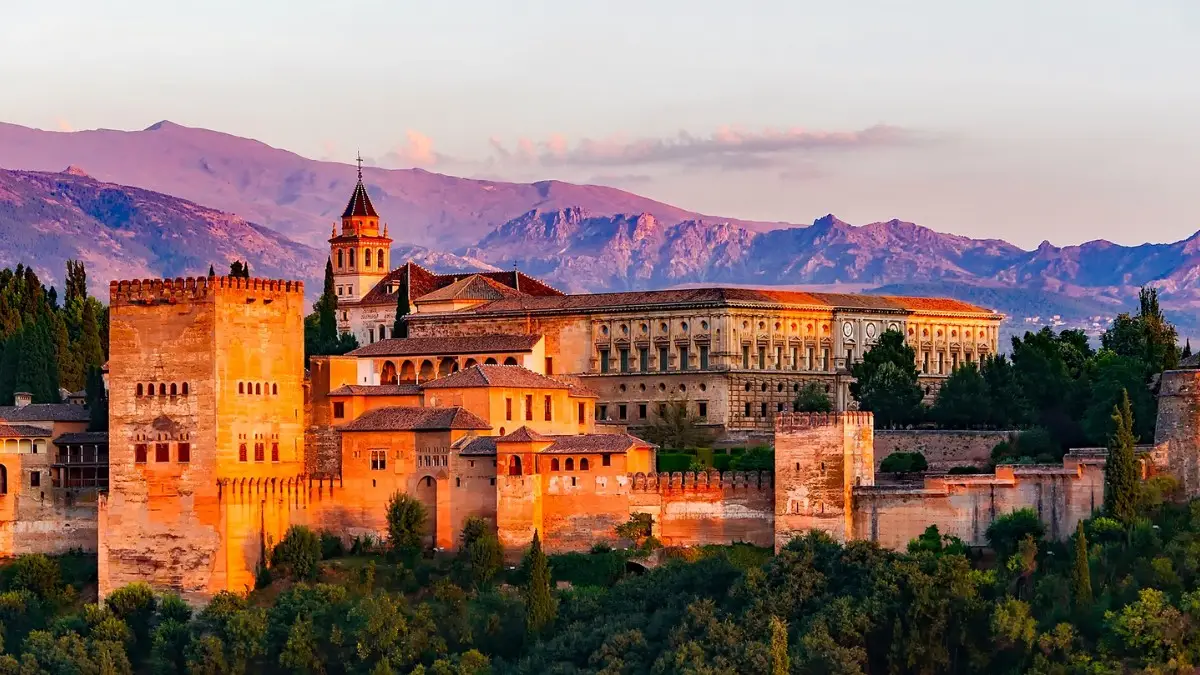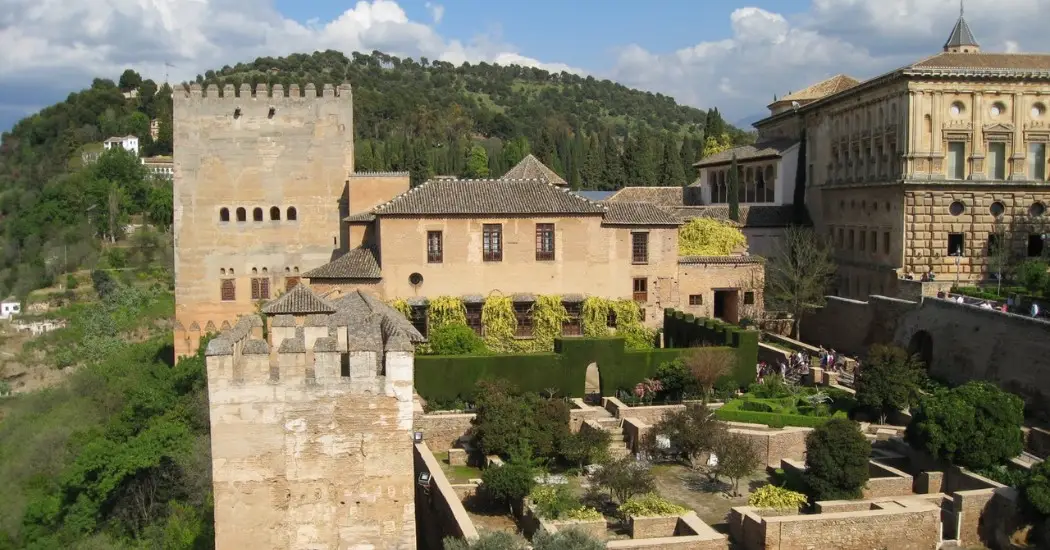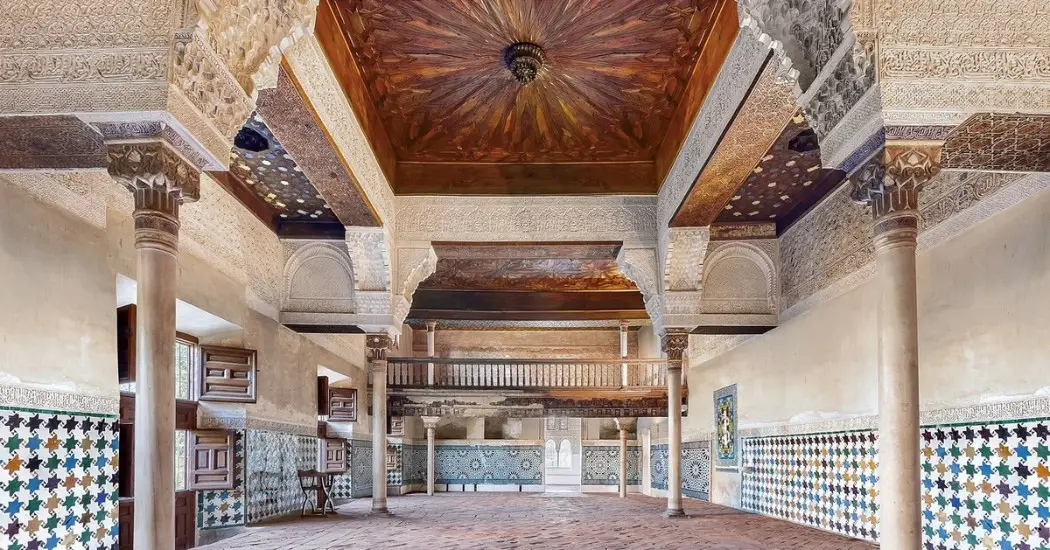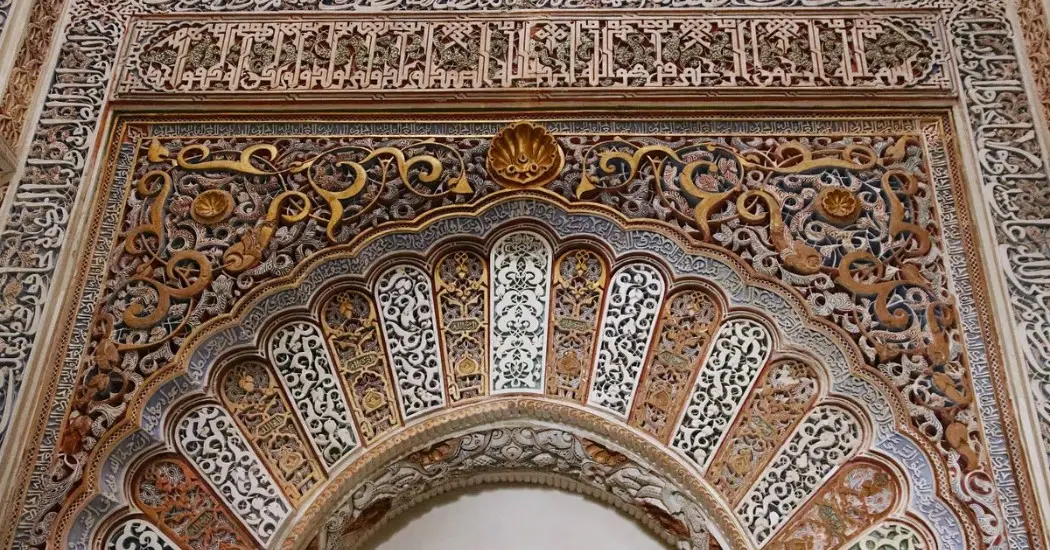Facts about Alhambra
Stories and secrets behind the Palace

Did you know that Alhambra was once a fully functioning city with its own palaces, bathhouses, and secret passageways?
Or that some rooms were designed so perfectly, a whisper can travel clearly from one end to the other?
From tiles purposely made with tiny flaws to reflect divine humility, to legends of haunted towers and hidden love stories, the Alhambra is filled with secrets, stories, and stunning details that go far beyond its red walls.
Let’s uncover some of the most fascinating facts behind this timeless masterpiece of Islamic art and architecture.
The Alhambra Castle attracts over 2.6 million visitors annually, so booking in advance is a smart choice. The skip-the-line ticket is the most popular and budget-friendly option. For a deeper understanding of the palace, the guided tour offers expert insights, while the night tour provides a magical experience in a peaceful atmosphere.
1. The Fiery Fortress: Why Alhambra is called the Red Castle
The name “Alhambra” means “Red Castle” in Arabic, inspired by the reddish walls and towers that glow like fire at sunset.
Located on La Sabica hill, the fortress has amazed visitors for centuries. Its red stone not only adds beauty but also symbolizes strength, passion, and a rich history.
2. Secret passages and social barriers: The Alhambra’s hidden class division
Behind its beautiful walls, the Alhambra was carefully designed to separate people by their social roles. Servants, officials, and the royal family used different entrances and hallways, rarely crossing paths.
This layout wasn’t random, it reflected the strict social system of Moorish society, where privacy and order were tightly controlled.
3. A City within walls: How Alhambra became more than just a Palace

The Alhambra wasn’t just a palace—it was an entire city. It had six palaces, bathhouses, towers, and a smart water system that kept gardens and fountains flowing. During the rule of the Nasrid dynasty, this self-contained city was a center of wealth, culture, and power.
After the Nasrid dynasty fell in 1492, Alhambra lost its role as a royal city and was taken over by Christian rulers. Over time, parts of it were neglected or damaged, especially during the Napoleonic wars. It wasn’t until the 19th century that restoration began, helping preserve it as the historic monument we see today.
4. The Talking walls: What the inscriptions reveal about Life in Alhambra
The Alhambra’s walls are filled with Arabic writings, poems, religious phrases, and wise sayings.
These weren’t just decorations. They reminded people of their faith, inspired thought, and added deeper meaning to everyday life. Reading them offers a glimpse into the lives and values of those who once lived there.
5. Paradise on Earth: The Spiritual vision behind the Alhambra’s design
The layout of the Alhambra follows a spiritual plan. Each palace is built around a peaceful courtyard with gardens and fountains.
This design was meant to reflect the Islamic idea of paradise, a perfect balance of nature, beauty, and calm. Every space was created to bring peace and reflection.
6. Perfectly Imperfect: The Secret flaw in the Alhambra’s stunning tiles

The Alhambra’s tilework is famous for its perfect patterns and mathematical precision. But if you look closely, you’ll find tiny flaws built on purpose.
Artists believed that only God could be perfect, so they added small “mistakes” to show respect for divine power.
7. Engineering marvel: The ancient hydraulic system that brought water to Alhambra
In dry southern Spain, water was precious. The Alhambra’s builders designed an advanced system of channels, called acequias, to bring water into the complex.
This steady flow supported lush gardens, fountains, and daily life, turning the fortress into a green, refreshing escape in a hot climate.
8. Nature’s Air Conditioner: How Alhambra stayed cool in the Andalusian heat

The Alhambra stayed cool because of its clever design. Pools like the one in the Court of the Myrtles cooled the air through evaporation, while thick walls and shaded gardens kept interiors comfortable. These smart techniques worked like ancient air conditioning and still work today.
9. Earthquake-proof elegance: The Science behind the strength
Even though the Alhambra is in an area where earthquakes are common, it has lasted for centuries.
The secret lies in its smart construction; builders used tightly packed earth and flexible lead layers that could absorb the shaking. This clever design helped protect the buildings, the people inside, and the priceless artwork.
10. The Whispering Chamber: Secrets hidden in stone
One of the Alhambra’s hidden surprises is a room where you can hear someone whisper from the other side.
The ceiling is shaped in a way that carries sound perfectly across the space. It’s a simple but smart example of how the builders used design to create amazing effects.
11. Masterpieces in plaster: The Artistry behind Alhambra’s decorations

While many palaces were built with carved stone, much of the Alhambra’s beauty comes from plaster.
Skilled craftsmen carved delicate patterns and Arabic calligraphy into the walls, then added colorful tiles to the arches and columns. Inspired by styles from the Byzantine world, this detailed artwork is a stunning example of Islamic design.
12. War and Resistance: Napoleon’s siege and a Soldier’s heroism
During the Peninsular War (1810–1812), French troops occupied the Alhambra and tried to destroy it with explosives. Eight towers were lost, but Spanish forces intervened just in time.
A brave act by Corporal José García, who protected the Nasrid Palaces from cannon fire, is still honored in the Alcazaba today.
13. Ghosts, Prophecies, and Forbidden Love: The Legends that linger
The Alhambra isn’t just made of stone—it’s filled with stories. One legend says the world will end when the hand and key carved on the Gate of Justice meet.
Another tells of a heartbroken princess whose spirit still haunts the Torre de las Infantas.
In the Generalife, a cypress tree is said to have witnessed a forbidden affair that led to a tragic massacre—its memory said to linger in the blood-red stains of the Sala de los Abencerrajes.
